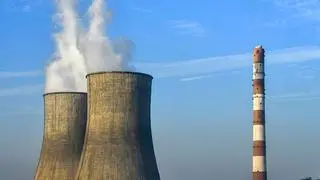Oil prices fell on Thursday after official data showed an unexpected rise in US crude stockpiles, record high US output and increase in production by major oil exporters.
International crude oil benchmark Brent was down 40 cents at $72.50 a barrel by 0740 GMT. US light crude was 20 cents lower at $68.56.
Brent has fallen almost 9 per cent from last week's high above $79 on emerging evidence of higher production from Saudi Arabia and other members of the Organization of the Petroleum Exporting Countries as well as Russia and the United States.
“The outlook remains negative,” said Robin Bieber, technical analyst at London brokerage PVM Oil Associates.
The US Energy Information Administration had said on Wednesday US crude production had reached 11 million barrels per day (bpd) for the first time. The country has added nearly 1 million bpd in production since November, thanks to rapid increases in shale drilling.
Even higher US production is likely, Rystad Energy said.
“We are still bullish on US shale, though we expect to see a temporary plateau in 2019 due to the bottlenecks of pipelines and, indeed, manpower and drivers,” said Yosuke Uehara, Vice-President at Rystad Energy.
A sharp jump in US crude oil inventories also added to the bearish tone in the market.
US crude stocks rose 5.8 million barrels last week, compared with a forecast of a decline of 3.6 million barrels.
US gasoline inventories dropped by 3.2 million barrels last week, while distillate stockpiles , which include diesel and heating oil, declined by 371,000 barrels, the EIA said.
A Reuters poll taken before the data release had forecast gasoline stocks would be unchanged and distillate stockpiles would show a build of around 900,000 barrels.
Meanwhile, OPEC and non-OPEC producers cut oil output in June by 20 per cent more than agreed levels, compared with 47 per cent in May, two sources familiar with the matter told Reuters on Wednesday.
Saudi Arabia had boosted production sharply last month, raising crude shipments to world markets by 390,000 bpd to 7.6 million bpd, Kpler tanker-tracking data showed. That was the biggest increase since the end of 2016, according to the International Energy Agency.
A Reuters survey of OPEC production showed Saudi output at a near-record, up 700,000 bpd at 10.70 million bpd.








Comments
Comments have to be in English, and in full sentences. They cannot be abusive or personal. Please abide by our community guidelines for posting your comments.
We have migrated to a new commenting platform. If you are already a registered user of TheHindu Businessline and logged in, you may continue to engage with our articles. If you do not have an account please register and login to post comments. Users can access their older comments by logging into their accounts on Vuukle.